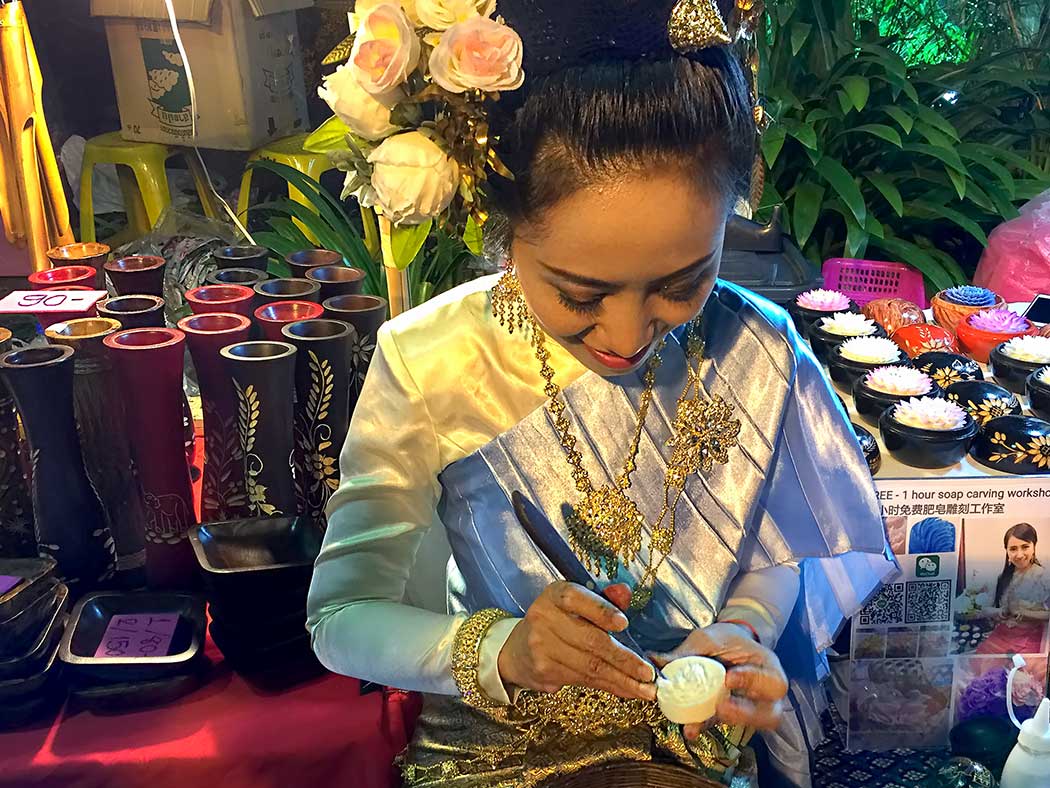The Sunday night Walking Street Market in Chiang Mai, Thailand, focuses on locally produced arts and crafts. Products include clothing, lacquer ware, painting, wood carving, ceramics, pottery, hand made paper goods, lanterns, and paper umbrellas, to name a few. Like many of the artisans who offer their wares during the market, this woman is demonstrating the Thai art of soap carving. She methodically shaves off minute pieces from a bar of soap to create floral designs. While the Internet is rife with tutorials on the art of soap carving, the most beautiful, intricate, delicate carvings I have ever seen are in Thailand.
Soap carving developed from the art of carving fruits and vegetables, for which Thailand is world famous. Thai culinary carving arts were developed more than 700 years ago in Sukothai, the original capital of Thailand. Fruits and vegetables were carved into elaborate centerpieces for the Royal Family dinner table. Woman working at the Royal Palace were routinely taught this skill, and it gradually trickled down into Thai society. The relatively new skill of soap carving began as a way to provide designs that lasted longer than carvings made from perishable produce.

